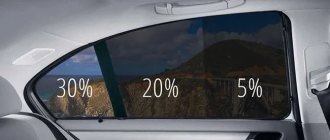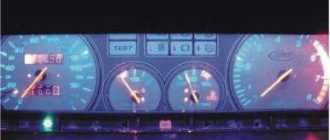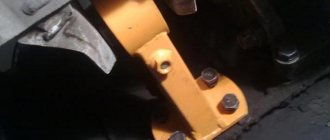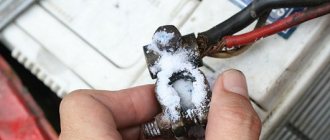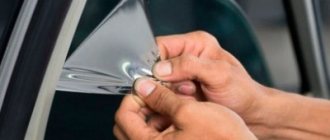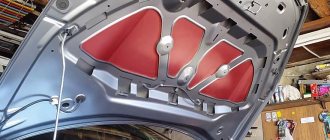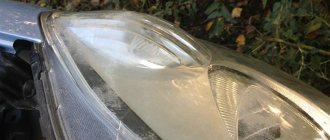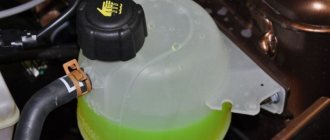Many car owners, despite the prohibitions of state traffic inspectors, still prefer that some of the windows in their car be covered with a special film that provides protection from sunlight. This can be done at car service centers, but it’s no secret that tinting a car yourself is a fairly simple procedure. Let's look at it in detail.
What tools will you need?
To do this you will need:
- Purchase tint film from a parts store. It is better to take film produced in America or England, where there is strict control over the quality of such products. Recommended brands: Jonson, Llumar, Global, SunControl.
- You will need special plastic scrapers to smooth the material. They are not included in the package of expensive films, but are mainly included with Chinese or Korean films of very low quality. If there are no scrapers on sale, you can also make them yourself. You should take elastic plastic and cut out a plate from it, the dimensions of which should be 10x12 centimeters. One edge of the scraper should be made very even and smooth so that there are no burrs or irregularities on it, because it is destined to become the working edge of your tool. This is a necessary condition, since the tint film is very easy to tear or scratch, so it would still be better to purchase a factory scraper rather than skimp on such a trifle, on which the quality of the work depends.
- You will also need a small amount of transparent shampoo, you can take the usual one for washing your hair, but only transparent, so that it cannot give a tint to the glass when applied; cream or gel shampoos are not suitable for these purposes. If you don't have clear shampoo at home, you can use clear liquid soap or dishwashing detergent.
- Prepare a spray bottle, preferably with an air pumping function. You can, of course, take a container from a glass cleaner, but it will be more convenient for you to work with the type of sprayer that first pumps in air, and then it will be sprayed by simply pressing a button or lever. Such sprayers are used when working in the garden to spray seedlings.
- Buy one of the types of stationery knives with a retractable blade in advance. You can use a razor blade, but you should use a new one, not an already used one. Only you will need to secure one edge of the blade into a wine bottle cork; this will protect your hands from possible cuts and it will be much more convenient for you to work. The special tinting knives offered, as a rule, are made in Japan; at their high price, they are several times sharper than ordinary knives.
- Car glass cleaner should be in every car. All you have to do is thoroughly rinse the glass that will be tinted.
- To carry out all stages of work, it will be good to have a supply of new napkins, but not made of fabric, but of non-woven material.
- Sufficient amount of clean water in a clean container.
The list may seem long, but it lists the ingredients for all stages of the work and therefore they should be prepared in advance, in sufficient quantities and placed within such a distance that you have them at hand without having to interrupt your work in order to take the right thing. Despite its apparent simplicity, the work of tinting car windows requires special care and concentration. It should be carried out in a clean box where dust does not fly. If you plan to do it outside, then it is better to choose a gloomy day so that the sun and insects cannot interfere with you.
After all the preparatory work has been completed, feel free to begin covering the glass with tinting film.
Let's start work
Before you start tinting your car with your own hands, you will have to cut out the film, taking the dimensions of the glass as a basis. You need to do the following: spray the entire glass plane with clean water and apply the film to the wet glass so that it fits tightly to the surface. Drops of water hold the material, but make it possible to move it around the perimeter of the glass. You should arrange the film so that the waste is the smallest part of it. You should leave a margin of up to one millimeter along the edge, and even more at the bottom, if the windows are lowered, then cut off the material along the margin line. But this must be done carefully, since it is very thin and can easily tear.
If you are afraid of making incorrect cuts, you can initially make a “pattern” from plastic film or tracing paper. These materials also adhere well to a wet surface, and only then, using the existing template, you can cut off the amount of tinting film you need on a flat surface. After this, we remove the prepared blank from the glass and thoroughly wash the plane of the glass on which we plan to glue the film. While the glass is completely dry, you can dilute shampoo or detergent in water in a ratio of 1:10 and pour the composition into a spray bottle. It is in this composition that the most important secret lies, which the car service workers involved in tinting will never reveal to you. And at the same time, it is shampoo diluted with water that “neutralizes” the glue on the film for a short period of time. Now that you know the main secret, you can continue working.
Spray the prepared composition onto the glass from a spray bottle, then take the film by the upper edge and peel the film directly from the adhesive base in one of the corners. A small amount of solution should be injected into the place where you just peeled the film. Having secured it to the place intended for it, with smooth movements we begin to release the tint film from the protective one, while simultaneously pressing it against the glass. You should not rush to carry out such actions, because the shampoo neutralizes the glue for a period of up to five to seven minutes, and if you spray the area where the film is glued from time to time, you will have even more time.
After you have removed the entire protective layer, the tinting film remains attached to the surface of the glass. It is currently fixed, but has not yet been finalized. You still have time to position the film while it can still slide over the applied solution.
What and how can you tint?
Even twenty years ago, seeing a completely tinted car was not such a rarity. Nowadays, traffic rules quite strictly limit the covering of car windows. Incorrect installation of tinted films will result in a fine of five hundred rubles and, of course, removal of the tinting.
To prevent such trouble from happening, you need to remember two things. Firstly, all windows are allowed to be tinted, including the front window. Secondly, different types of glass have different capacity limits. According to GOST, the windshield should transmit 75% of the light flux, the front (driver and front passenger) - 70%. This requirement was introduced because tinting limits the driver’s visibility behind the wheel, and, accordingly, increases the risk of an accident. Therefore, there are no throughput standards for rear windows. The only thing is that car enthusiasts cannot use mirror-type tint film.
Interestingly, law enforcement agencies have no questions about the factory darkening. Now some brands are rolling out cars with tinted windows. Such darkening is considered “weak”, below the values permissible by GOST, since international standards are much stricter in this matter than native legislation. Therefore, some car owners are not happy with it. But at the same time, it is one of the most durable and wear-resistant. At the manufacturing stage, special components are added to the glass to darken it. Together with the film, you can completely block access to light into the car interior.
Final fixation of the film on the glass
When you are sure that it has taken its rightful place, you can begin the process of final gluing it. To carry out this step you will need a scraper and napkins. Using a scraper, you begin to carefully, without making significant physical effort, smooth the film; this is necessary to remove soap solution and air bubbles from under it. As a rule, these actions are carried out starting work from the center of the surface. Ultimately, if the material is properly glued, then there should not be even a small air reservoir underneath it, since these bubbles look like whitish spots on the outside and are clearly visible.
Your job is to push them to the outer edge of the glass, where they can be removed with a clean cloth. The film that you left as a reserve around the edges should be cut off at the level of 1-2 millimeters to the level of the outer edge of the glass. If you do not do this, then over time it will begin to touch the edges and ride up. But the level of the lower edge should be placed under the sealing tape at a distance of about 0.5 centimeters, this will protect it from possible lifting during daily use of the windows.
After all these operations have been carried out, the work of attaching the tint film to the car windows can be considered complete. It will finally dry in 24 hours; this period will be required for the glue to completely harden and secure the material to the glass. It is not recommended to use glass covered with glass or turn on the heating during this time.
Caring for a Tinted Window
For the first 7 days after gluing, it is forbidden to wash the glass unit; when gluing is completed, you can wash the window using the usual method. Cleaning with abrasive agents and rough brushes is unacceptable. Dirt from the tint coating is easily removed by moistening the area with soapy water and after a short time removing it with a soft sponge.
For the first 7 days after gluing, it is forbidden to wash the glass unit; when gluing is completed, you can wash the window using the usual method.
The article described how to apply tinting to windows in an apartment correctly. This product will help make being in a room more comfortable in hot weather and will provide additional protection from prying eyes. It is important to choose high-quality material to make gluing easier.
Practice before you do it!
As in any matter, the success of perfect tinting is influenced not only by the quality of the film you purchased, but also by the skill of the person who glues this material. Therefore, it will be better if you, before tinting your car window for the first time, practice gluing scraps on regular glass. You need to master the skill of neutralizing the adhesive layer and smoothing it out. The success of window tinting lies in the quality of these works.
Using the same principle and in exactly the same sequence, windows are covered with armor film. Its structure is more rigid and thicker, but this only makes the process of working with it easier.
Films of different types can be glued one on top of the other, that is, when the glass covered with tinting has completely dried, you can stick an armored film on top of it or in the reverse order.
When armoring or tinting the glass in a car with your own hands, it is worth remembering the fact that some types of glass have a concave or curved structure. This primarily applies to the rear half of the body and the windshield. And the shape of the film when flattened remains flat. This circumstance presents some difficulties when carrying out such operations. The film itself can stretch, but only slightly, although usually this is quite enough.
However, it happens that the car windows have a strongly concave shape and here you will not be able to carry out the work in a single, solid piece. You can get out of this situation in a simple way: divide the glass plane into several parts and carry out the previously described algorithm using several specially cut parts.
Preparatory stage
Before you start directly tinting the glass, you will need to select a suitable film. It’s worth noting right away that it is extremely undesirable to use the cheapest Chinese film, since its service life will not be very long. Over time, such material fades in the sun, and the adhesive layer leaves much to be desired. It is either too weak or, on the contrary, too sticky and its remains will be very difficult to remove if the tint is removed.
More expensive film from famous manufacturers has optimal thickness, does not lose color in the sun and can last for many years.
We recommend:
Do-it-yourself painting of alloy wheels: detailed instructions
You should also not forget about the light transmittance of the film, because if you do not take this point into account, you can get serious problems when passing a technical inspection or a traffic police check. For example, rear windows can be tinted using any films, except those that have a mirror effect. If we talk about the front side windows, then they should be able to transmit at least 70 percent of the light, as for the windshield, then the figure should be at least 75 percent.
Car tinting should be done in a clean room with a good light source and normal humidity. It would also be useful to find an assistant in order to minimize all risks. Before starting the process, you should thoroughly wash the car, paying special attention to the windows. The surface must be smooth, free from dust, chips and deep scratches. If you plan to tint the door windows without removing them from the car, you will need to remove all the seals.
DIY car window tinting video
First, you should thoroughly clean the surface from dust on the side that will be most convenient for gluing. You will need a certain amount of film, but it is worth considering that it should be enough to cover the entire glass in one sheet. And get ready for the fact that you may not succeed the first time and will have to make a second attempt, and sometimes a third. You need to prepare a scraper, although it is often included as a bonus with the material itself. For such work, you need an industrial hair dryer; a home appliance will not work here; it has a low level of temperature rise with a strong air flow. You will also need a sharp utility knife and scissors, as well as glass cleaner and a spray bottle of water. After all the necessary materials and tools have been purchased and prepared, you can begin tinting your car windows yourself.
Choosing the best film for self-window wrapping
To make the optimal choice, many parameters should be taken into account. The first is the type of film. They come in painted and metalized varieties (there are others, but inexperienced pasters should not mess with them). The second option is preferable, as it is more durable and provides good protection from sunlight, but the price is twice as high. It makes sense to take high-quality colored film for “training”. Its resource will last for 2-3 years, after which (based on the experience gained) you will decide which one to glue for the second time.
You should not take the cheapest options (most often Chinese) to learn how to tint. During installation, you will encounter additional difficulties: creases, poor glue and rapid wear. With such materials and without experience, it is unlikely that you will be able to complete the pasting process.
Recommended and trusted manufacturers (if there is a quality certificate, there may be fakes):
- SunTek - strong adhesive, high strength and excellent thermal insulation. The Standard series is suitable for beginners.
An example of one of the varieties of SunTek film - Llumar has been on the market for a long time, so the production process is mature and the quality is high. The ATR 10 LUX series has a bronze tint. The price is above average.
Is one of the top manufacturers - Sun-gard - painted films from this manufacturer have a five-year warranty due to the protective silicone coating.
Most Sun-gard films are six-layer. - SunControl has a “trick” in ultraviolet protection. The company is Indian, but the quality does not suffer from this.
SunControl pleases with an abundance of tint coating colors - SolarGard uses expensive metals (copper, aluminum, titanium) in the production of its films. This gives an excellent variety of shades not available from other manufacturers (white, blue, bright green and many others).
SolarGard factories are located in the USA
Choose which brand suits your liking and wallet, and we’ll get to work.
The operating procedure is as follows:
- With a margin of at least two millimeters around the entire perimeter of the glass sheet, cut a piece of film of the length you need.
- Decide which side of the film is protective (it will be transparent) and which side is tinting.
- A thick layer of water from a spray bottle or spray bottle should be applied directly to the film and glass surface.
- Without peeling off the protective layer under any circumstances, you should lay the film so that the transparent side faces up.
- You begin to smooth the film to remove water and ensure it adheres tightly to the surface of the glass. Folds should begin to appear along the edges of the curved surface.
- At this stage of work, it is best to do a little training with a small piece of film on the curved glass, so that in case of failure you do not have to remove the entire film. To do this, you need to determine the temperature regime for using a hair dryer and the distance to the material so that the film begins the compression process under the influence of high temperature.
- After finishing the training, you can begin to remove folds on a large plane; you should start working from the immediate center of the fold. As soon as the film begins to heat up, without removing the hair dryer, smooth it with a scraper and carefully ensure that the surface of the film does not overheat.
- After painstaking smoothing work, the film should take the shape of glass. You have to carefully remove it and thoroughly wash the glass plane where you will subsequently glue the tint film. There should be no dust or small grains of sand left on the glass itself.
- It is necessary to fill the spray bottle or spray bottle with the purest water, preferably purchased in a store, this will guarantee that there will be no sediment in it.
- Carefully begin to peel off the protective film, immediately starting to spray it with water, this will protect it from accidental twisting.
- The next stage of work will be to spray the glass with water and lay the film on it with the side that is covered with the adhesive solution. It will be better to start the gluing process from one side of the glass, rather than from the bottom or top. Here you will most likely need the help of a friend, since you need to spray water on both working surfaces and at the same time continue to lay the adhesive side of the film on the glass.
- At the end of the work, you should have a protective layer in your hands, and the tinting material should lie on the wet glass, with the adhesive base facing down. Then you need to put the protective film on top of the tint film and begin to remove the trapped air and remaining water with a scraper. This process should begin from the middle of the surface; if large bubbles appear, you can use a hairdryer and ensure that the film remains even and smooth.
- You begin to enjoy the work you did yourself on tinting the windows in your car! And if something doesn’t work out, start working again.
In conclusion, I would like to say the following. Do-it-yourself car window tinting is easy on flat surfaces, but working on a curved surface can cause you a lot of trouble. Before you achieve the effect you want, you can ruin many rolls of tint film and have time to fray your nerves, so it will be better if you entrust this work to professionals from the service center. You will pay them a certain amount of money, but after a certain time, usually no more than a day, you will be able to pick up your car from the workshop with high-quality work done.
Kolodiychuk Andrey
, especially for
How to apply car tint to apartment windows
Film coatings for cars have the best protection against heat, so some people decide to glue them in the apartment. There are some nuances in the gluing process:
- Use a special solution, not just soap and water, to ensure an even distribution of the coating over the surface;
- To treat difficult areas, the surface is heated in these places with a hairdryer, which leads to the film being leveled.
To treat difficult areas, the surface is heated in these places with a hairdryer, which leads to the film being leveled.

